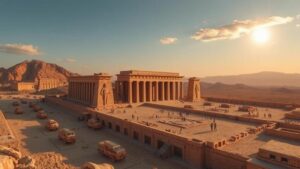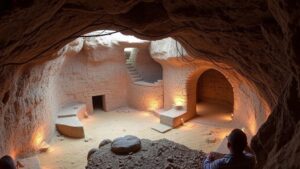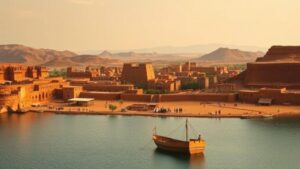Balancing scientific inquiry with the sacred significance of ancient sites.
Balancing Scientific Inquiry with the Sacred Significance of Ancient Sites
The intersection of scientific exploration and the reverence for ancient sites presents a myriad of challenges and responsibilities. As archaeologists and historians strive to unlock the mysteries of our past, they must navigate the delicate balance between inquiry and respect for the cultural significance these sites hold for many communities. This article delves into the complexities of this balance, examining notable examples, ethical considerations, and the imperative for collaboration between researchers and indigenous peoples.
The Importance of Ancient Sites
Ancient sites, such as Stonehenge in England, Machu Picchu in Peru, and the Pyramids of Giza in Egypt, are not merely remnants of the past but are also vital to the cultural identity of various groups. e sites are often seen as sacred spaces, integral to the spiritual beliefs and historical narratives of the communities that have inhabited these regions. For example, Machu Picchu, built in the 15th century, is not only a UNESCO World Heritage site but also a significant emblem of Inca civilization and indigenous identity.
Scientific Inquiry: A Double-Edged Sword
Scientific inquiry often involves excavation, analysis, and interpretation of materials found at ancient sites. While these processes can yield invaluable insights into human history, they also risk damaging the integrity of sacred spaces. Excavations, for example, can lead to the disturbance of burial sites or the removal of artifacts that hold profound significance to local communities. A notable incident occurred during the excavation of the Kennewick Man in Washington State, where scientific analysis clashed with the beliefs of Native American tribes who viewed the remains as sacred.
Ethical Considerations in Archaeology
Archaeologists are increasingly recognizing the necessity of ethical frameworks that respect both scientific inquiry and indigenous rights. The practice of community archaeology emerges as a solution, involving local populations in the decision-making processes surrounding archaeological work. This model was effectively implemented in the excavation of the ancient city of Palmyra in Syria, where archaeologists worked alongside local historians and cultural heritage stakeholders to ensure respect for the significance of the site.
Collaborative Approaches
Collaboration between scientists and indigenous communities fosters a more balanced approach to research at ancient sites. For example, the recent archaeological projects at the Aboriginal rock art sites in Australia exemplify such collaboration. Researchers have engaged with local Aboriginal communities to incorporate traditional knowledge alongside scientific methods, allowing for a comprehensive understanding of the sites cultural heritage. This partnership not only enhances archaeological findings but actively honors and preserves indigenous narratives.
Challenges and Controversies
Despite the advancements in ethical considerations and collaborative practices, numerous challenges persist. Controversies often arise over who has ownership and rights to ancient artifacts. The Elgin Marbles, taken from the Parthenon in Greece, exemplify this ongoing debate, as Greece asserts that the artifacts should be returned to their country of origin. Such discussions highlight the tension surrounding scientific inquiry and the reverence for ancient sites, urging a need for transparent dialogue and potential restitution.
Conclusion: Moving Forward Responsibly
Striking a balance between scientific inquiry and the sacred significance of ancient sites is crucial for preserving cultural heritage while advancing knowledge. As researchers navigate these complexities, adopting ethical practices and fostering collaborative relationships with indigenous peoples are imperative. This respectful approach can lead not only to significant archaeological discoveries but also to a deeper appreciation of the cultural narratives that enrich our understanding of human history.
Actionable Takeaways
- Encourage dialogue between archaeologists and local communities to foster mutual respect.
- Incorporate traditional knowledge into scientific practices to enhance understanding.
- Advocate for ethical guidelines that prioritize the preservation of sacred sites.
- Support policies that promote the return of artifacts to their countries of origin when appropriate.



